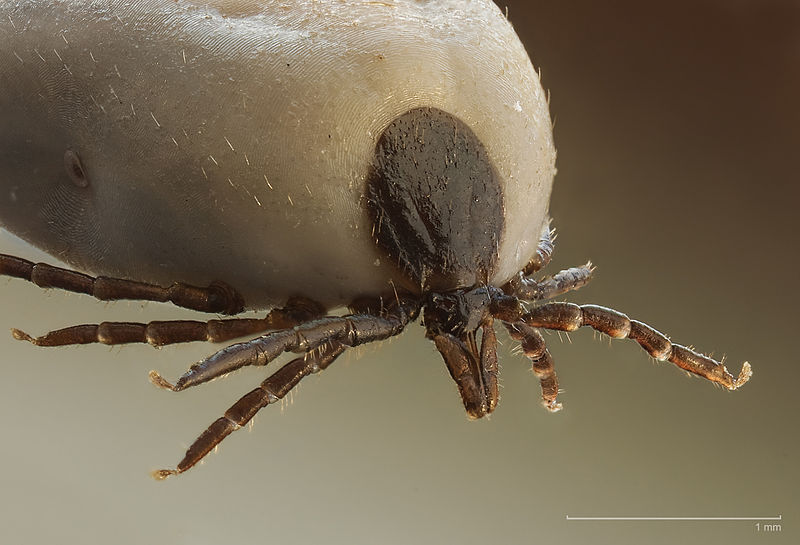More Info
Ticks are small arachnids in the order Ixodida. Along with mites, they constitute the subclass Acarina. Ticks are ectoparasites (external parasites), living by hematophagy on the blood of mammals, birds, and sometimes reptiles and amphibians. Ticks are vectors of a number of diseases, including Lyme disease, Q fever (rare; more commonly transmitted by infected excreta),[1] Colorado tick fever, Rocky Mountain spotted fever, African tick bite fever, tularemia, tick-borne relapsing fever, babesiosis, ehrlichiosis, Tick paralysis and tick-borne meningoencephalitis, as well as bovine anaplasmosis.
Learn more »
Medical Removal
In general, the best way to remove adult tick is mechanically. To facilitate prompt removal, fine-tipped tweezers can be used to grasp the tick as close to the skin as possible and detach it by applying a steady upward force without crushing, jerking or twisting, in such a way as to avoid leaving behind mouthparts or provoking regurgitation of infective fluids into the wound. Proprietary tick removal tools are also available. It is important to disinfect the bite area thoroughly after removal of the tick. The tick can be stored and, in case of signs or symptoms of a subsequent infection, shown to a clinician for identification purposes together with details of where and when the bite occurred. If the tick's head and mouthparts are no longer attached its body after removal, a punch biopsy may be necessary to remove any parts left inside the patient.
